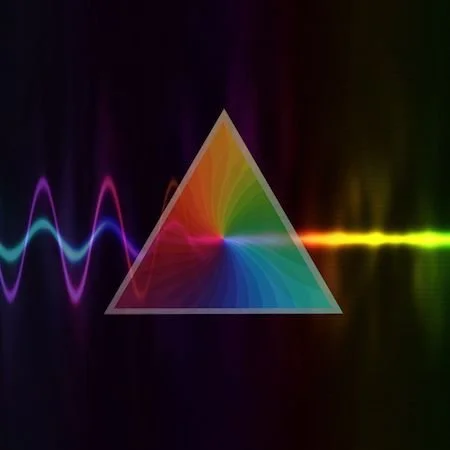Generating coherent light in the ultraviolet (UV) is important for a broad range of applications including materials processing, medical surgery, diagnostics, scientific experiments, and many others. A practical way to generate UV light is by converting more easily obtained infrared or visible laser beams into the UV light using nonlinear optics--harmonic generation processes in crystals. This works well for producing light in nearly all of the UV A range (315 nm – 400 nm), the longest of the UV wavelengths. There are several crystals that can do this job.
Read MoreA perfectly generated wave may be plano or spherical. What happens to it as it travels may alter that perfect shape. This circumstance is called wavefront distortion.
Tight control of crystal growth, sophisticated selection of material, near compulsive attention to detail in manufacturing and polishing combine with discriminating inspection practices to ensure that GAMDAN Optics products are free of transmissive wavefront errors.
Read MoreContamination can find its way onto all types of optics. Even if it is hard to see the contamination, it may be easy to see the damage it causes to optics that have been subjected to intense light. UV light is generally more likely to break molecular bonds and cause damage than visible or infrared light. Contamination can make a good optic appear to have a low threshold for laser induced damage. Here we’ll explain a few types of contamination, and we’ll show what can be done to prevent contamination on UV optics.
Read MoreCan the second harmonic generation be done efficiently with the right amount of peak power? In this article we will analyze what happens with lower peak power. For example, what if we run the same laser continuously (CW), so the average power might still be one Watt, but the peak power is now also now only one Watt. Can we efficiently generate the second harmonic of that CW beam? Read more and explore SGH with us…
Read MoreSurface texture, also referred to as surface roughness, is an important parameter for many manufactured items. It can be measured on ground or machined surfaces and is especially significant for polished surfaces. The performance of optical elements and the processing from shaping, to grinding, to final polishing is largely influenced by surface roughness. The surface roughness at each step of fabrication is a result of the operation, the substrate properties, and the conditions of the machine to part interactions, with a little chemistry thrown in for good measure
Read MoreThe wave-like behavior of photons leads to interference between two wavefronts which may be constructive or destructive. Usually that interference is partial; there is not total destruction or canceling, nor doubling of intensity for constructive interference. The result is a pattern of lighter and darker regions. This pattern often presents itself as lines (straight or arcs) or as closed circles. In some cases they may be irregular, even jagged.
Read MoreOptical fabrication operations such as grinding and polishing leave traces in the material below the surface being worked and while subsurface damage seems inevitable GAMDAN Optics has proven to minimize SSD. See the photos we took in our lab and the results.
Read MoreThis is the third in a series on OPOs from Gamdan Optics… With all the different types of OPOs, the choice of nonlinear crystal depends upon many factors: the desired beam powers, wavelengths, temporal profile (pulsed or CW), and other aspects of the OPO. The characteristics of all three beams (pump, signal, and idler) matter. The nonlinear crystal needs to transmit all the wavelengths. The crystal needs to provide a sufficiently strong nonlinear interaction between the beams—the crystal’s ability to support a strong nonlinear interaction is often characterized by a number, the nonlinear coupling coefficient.
Read MoreOPOs can use a wide range of laser pump beams. The pump lasers can be continuous or pulsed. Pulsed pump lasers might have almost any pulse length, ranging from Q-switched lasers to mode-locked lasers. The OPO will generally produce output with a temporal profile similar to the pump laser. CW pumps drive CW OPOs; pulsed pumps drive pulsed OPOs.
Read MoreAn Optical Parametric Oscillator (OPO) is a light source, and a feature of optical parametric oscillators is wavelength flexibility. OPOs can deliver wavelengths that may be difficult or impossible to achieve with lasers. Not only can an OPO be built to work at a specified wavelength, but also many OPOs can be tuned--the user can scan the wavelength. In a laser, stimulated emission from an energized laser medium amplifies light. The laser medium is usually energized by a separate electrical or optical power source. An OPO is different…
Read MoreWalkoff is different in different situations and with different materials. Second harmonic generation (SHG) and third harmonic generation (THG) can be accomplished in LBO and with other materials. For example, we could use one LBO SHG crystal and one LBO THG crystal. If we have beams with high peak powers then we can use short crystals. However to boost the efficiency of the THG process, we often want to make the crystals much longer. Read on for more about walkoff problems and compensation.
Read MoreSuppose we send two beams of light, each with a different unique color, through a transparent crystal. The light in each beam can also have different polarizations. Furthermore, suppose that these two beams are incident upon the crystal at the same location and going in the exact same direction. Once in the crystal, will they continue to go in the same direction—equivalently, are they still angularly aligned? In this article, we will take a closer look into dispersion and walkoff and why it matters.
Read More












